INTERVIEW WITH A MASTHEAD:
MEET THE 2024 BWR EDITORS
Every year, the BWR masthead changes hands. To give our readers and contributors a chance to get to know us a little better, each new editorial team completes an annual interview for our website. We submit questions to each other & answer each other’s questions in turn. Keep reading to learn about our favorite BWR pieces, our literary & mythical icons, if we’d rather marry the ocean, the sky, or the mountains, and more…
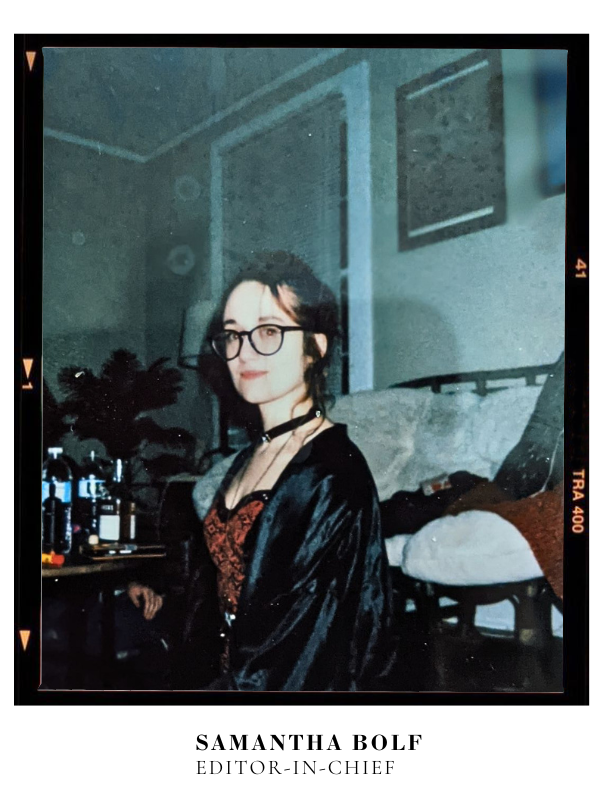 Describe your perfect day.
Describe your perfect day.
Lydia: Waking up after a perfect night of sleep (so elusive) in my own bed, strolling to a local coffee shop for a latte and a breakfast burrito, going to one of those library used bookstores that always have incredible affordable gems, teleporting to a beach staring at the ocean and swimming, halfway through the beach sit re-caffeinating, teleporting again to Spicy Moon, an NYC vegan Szechuan restaurant that I think about regularly, and finally teleporting for the last time to my bedroom where I’ll alternate between bursts of inspired writing and reading a flowery Romantasy manhwa or novel. My perfect day is a bit speculative still but I’m working on it.
Erika: I wake up with nothing I need to do; only things I want to do. I read in my armchair with my cat curled in my lap until a poem comes to me. I live my entire day inside the poem. I eat a hearty, warm breakfast. I get a chai latte and go on a long walk with no destination. I cut flowers and place them in a vase. I don’t doubt, for one second, the existence of magic.
Ernest: I would describe my perfect day to be one where I got to discover new favorite poems, witness the joy on the faces of my friends, and complete at least 2/3 of what I had planned for that day.
Chinaecherem: A Saturday spent cooking.
Isabelle: PALESTINE IS FREE!!!!!
What are some books (or texts) that y’all come back to, time and time again, that make you want to write—or even to remind you WHY you write in the first place?
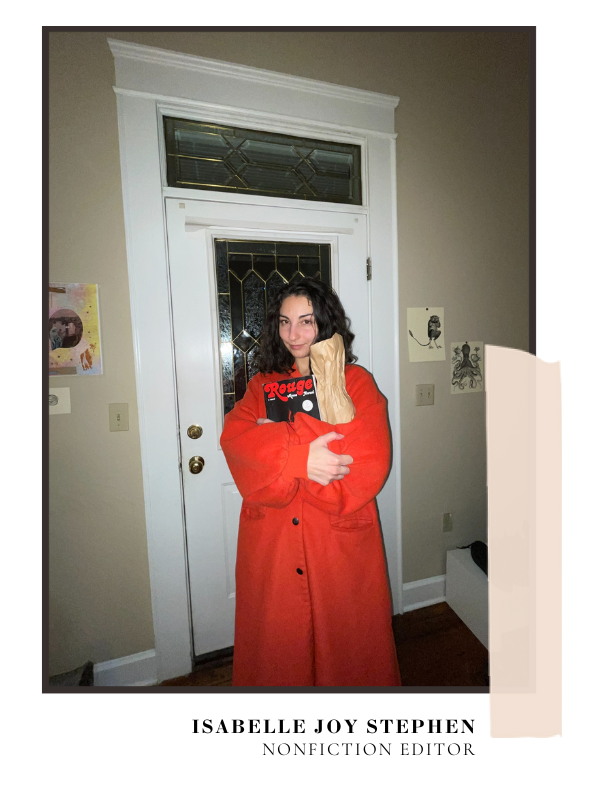
Lydia: If I’m looking to sob: “Never Let Me Go” by Kazuo Ishiguro, “Human Acts” by Han Kang, “The Story of a New Name” by Elena Ferrante. To revel in beautiful language: something by Erin Morgenstern, Donna Tartt, or Oscar Wilde. For expansive worldbuilding and an amazing plot: “The Three Body Problem” by Liu Cixin (specifically the first book in the trilogy). And for nostalgia: the Percy Jackson series will always own a permanent space in my mind.
Erika: The Girl in the Flammable Skirt, by Aimee Bender, Wild Milk by Sabrina Orah Mark, and Her Body and Other Parties by Carmen Maria Machado, for their use of magical realism, their strangeness, and their inventiveness. Bluets by Maggie Nelson and Garments Against Women by Anne Boyer for their genre fluidity and general genius. Bad Bad by Chelsey Minnis for its boldness and bad-assery. I also recently read Bliss Montage by Ling Ma, and it’s quickly becoming a favorite I’m sure I will revisit.
Ernest: OMG! They are so many: Richard Siken’s Crush, Donika Kelly’s The Renunciations, Toni Jensen’s Carry, Joan Didion’s The Year of Magical Thinking, and everything ever written by Leila Chatti, Ocean Vuong, Logan February, Li-Young Lee, and of course, my goddess, Louise Gluck.
Isabelle: Beloved, Beloved, Beloved. After that: Sheila Heti’s How Should A Person Be?; Mona by Pola Oloixarac; absolutely anything by Clarice Lispector.
Chinaecherem: Whenever I feel like I need some form of permission to write, or to write a certain way, I go back to Arundhati Roy’s The God of Small Things. It is a book that always remind me I need no permission to write the things I want to write about and in the ways I want to write about them. Or I could say it is the book itself which grants me the permission I need to write.
What is a myth/fable/legend/fairytale that you think about a lot and/or has inspired your writing?
Lydia: This is so hard for me (and I can’t wait to see what the other editors choose), but I’ve loved the Norwegian fairytale “East of the Sun and West of the Moon” since I’ve been little.
Isabelle: I’m obsessed with Hildegard of Bingen’s 11th century visions of revelation and apocalypse—her grotesque/resplendent imagery has made its way into a lot of my own end-of-days writing. I am also always thinking about bestie Cassandra, cursed with telling accurate prophesies nobody believed.
Erika: MARY TOFT. Okay so she was actually a real woman and not a myth but I think one could argue that she is a legend. She was a woman who, in 1726, pretended to give birth to 17 dismembered rabbits. I think one can also argue that she actually did give birth to them. She carried them in her womb for weeks before pushing them out of her body. She felt the pain of them. I’ve written several poems about her. She is indisputably a queen and I will not tolerate any Mary Toft slander! She did what she needed to do… I also love Carmen Maria Machado’s “The Husband Stitch,” a modern, feminist retelling of the classic horror tale “The Girl With The Green Ribbon.” I love reading the literary journal Fairy Tale Review and other contemporary fairy tales.
What’s your favorite thing to do during the weekend?
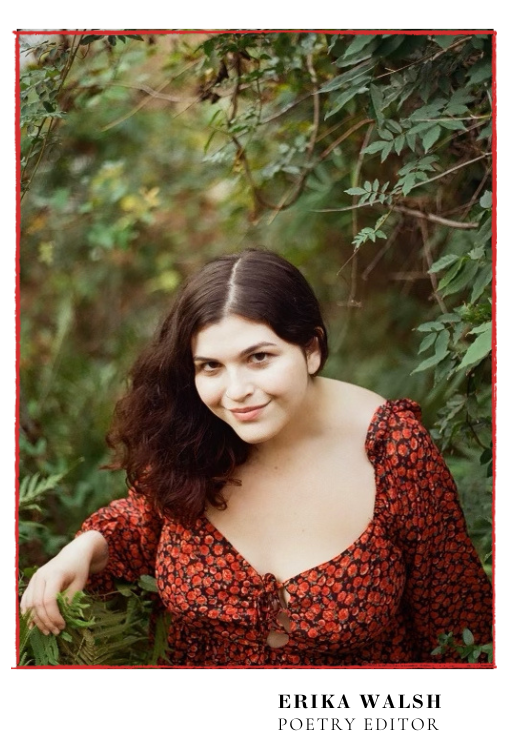
Erika: Lately, I’ve been loving playing Stardew Valley and Bananagrams and various card games with my partner. I love spending time with my friends, watching goofy movies and having dinner together. I love to try one new thing, even if it’s small.
Chinaecherem: As boring as it sounds, I do miss soccer on Sundays. It is the one physical activity I do with a fully quiet mind and an active body.
Ernest: Ha! Sleep, periodt! But that’s just what I say whenever I’m asked that question. Honestly, my favorite thing to do during the weekend is attempting to put my life together before the next week arrives, and that includes finding time to recharge.
Lydia: I guess this kind of contrasts with my “perfect day” question but I’ve enjoyed spending many of my weekends since moving to Alabama in Birmingham. It’s a really unique city. Also I find baking and doing laundry cathartic; the weekend is a nice time for me to take a breath and slow down a bit.
Who was your favorite character to write, and why?
Lydia: My favorite character to write has not been written yet, and that motivates me to keep writing (how’s that for a tongue-twister?)!
Ernest: The girl-character in one of my poems who finally got to love her coffee skin. She reminds me so much of me.
Many editors have described the process of choosing a piece for publication in a journal as ultimately a game of numbers. How much hold do you think the sheer mathematics of it all have on the decision making process? Do you recognize other, more dynamic layers of consideration? How much impact do you think these have, comparative to the mathematical limitations?

Ernest: I want all the amazing pieces!!! *insert crying emoji*
As an editor, I prize originality over every other thing; like, what unique thing is this person doing with their form, characterization, voice, etc.? But for this genre, I’m considering originality, and emotional appeal. Chiefly, emotional appeal ’cause I want the visual aspect of our next edition to be captivating enough as to evoke emotions from everyone who receives a copy.
Lydia: Oh this is a great question. I think about it a LOT! Especially now, being on both sides of the submission process I see the ominously low odds. But in a way, this can also be heartening, take a rejection as a statistical likelihood not a value judgement of your writing. The most important thing a writer can do is not get discouraged and keep trying. Send your work to a ton of places! Acceptances also depend on the luck of who your reader is because while a lot of us at BWR share similar feelings towards the pieces we read, each editor’s “dream magazine curation” will look different.
Chinaecherem: I think when it comes down to it, the numbers do matter, in various ways. A story, for example, that has the aesthetics of a particular magazine might be 10,000 words, whereas the magazine caps story submissions at 7000. If the writer of the story decides to cut the piece down the word limit, the story’s essence, the thing that made it have the taste of that magazine in the first place, could be lost. But I like to think every story, every piece of writing, eventually finds its way home: there are thousands of editors reading for journals all over the world, and if a piece gets hawked around enough, at some point, it will meet the editor it was meant for.
This is the point where I admit that, yes, this process of hawking a piece around long enough is also a form of personal hell.
Kiss, Marry, Kill: the ocean, the mountains, or the sky.
Isabelle: Marry the ocean…. kiss the sky… R.I.P. mountains i guess 🙁
Chinaecherem: Kiss the mountains, marry the sky, kill the ocean.
Lydia: Marry: the ocean (if the ocean is an option it will always be marry the ocean), kiss: the sky, kill: the mountains (I’m ambivalent).
Ernest: Kiss the mountains; marry the sky; kill the ocean (in my defense, the ocean terrifies me as much as it intrigues me).
Erika: After much deliberation, I’m going to have to kill the sky. I don’t really have anything against it per say, but the sky just seems a little… one note. I’d rather be married to the mountains—a little rough around the edges, a little more complex. I’d kiss the ocean for her mystery, and for her beauty.
What BWR-published piece would you recommend to someone who wants to get a snapshot of what the BWR aesthetic is?
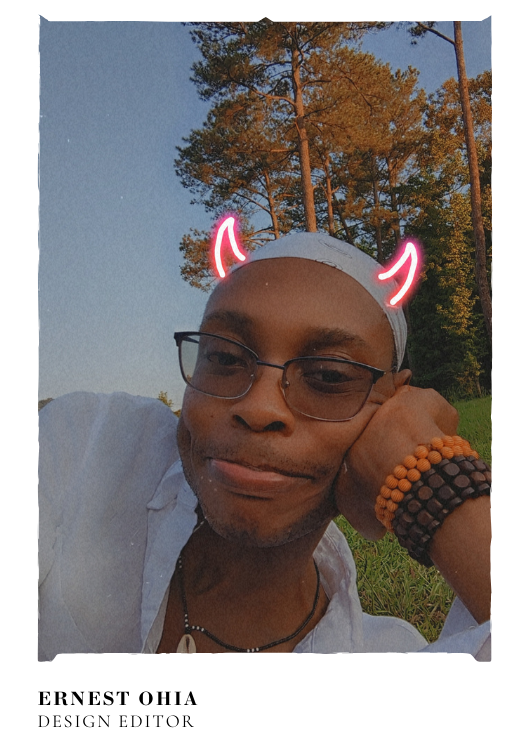
What’s your favorite thing to do during the weekend?
Erika: Lately, I’ve been loving playing Stardew Valley and Bananagrams and various card games with my partner. I love spending time with my friends, watching goofy movies and having dinner together. I love to try one new thing, even if it’s small.
Chinaecherem: As boring as it sounds, I do miss soccer on Sundays. It is the one physical activity I do with a fully quiet mind and an active body.
Ernest: Ha! Sleep, periodt! But that’s just what I say whenever I’m asked that question. Honestly, my favorite thing to do during the weekend is attempting to put my life together before the next week arrives, and that includes finding time to recharge.
Lydia: I guess this kind of contrasts with my “perfect day” question but I’ve enjoyed spending many of my weekends since moving to Alabama in Birmingham. It’s a really unique city. Also I find baking and doing laundry cathartic; the weekend is a nice time for me to take a breath and slow down a bit.
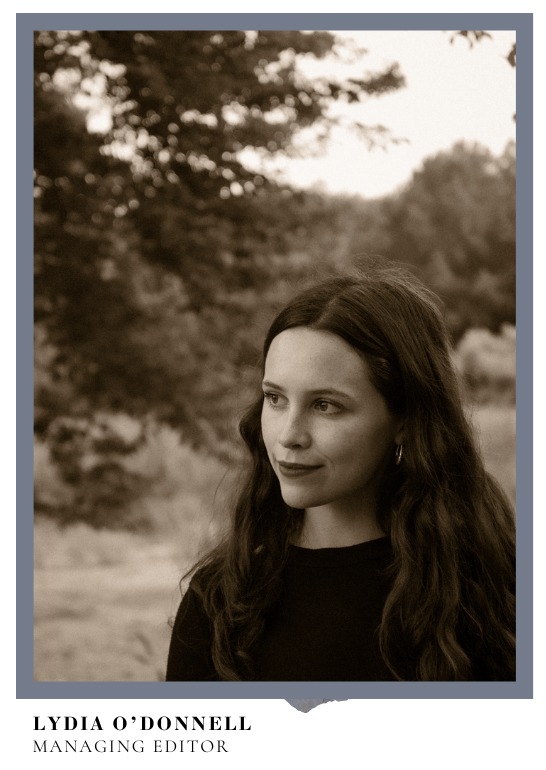 What is your hottest take? Your most unpopular opinion?
What is your hottest take? Your most unpopular opinion?
Chinaecherem: Cinnamon as a flavor was never meant for human consumption.
Erika: I feel like this is a very millennial/Gen Z cusp thing for me to say, but it’s literally cool to be a try hard, and to care! Stop being coy! Be a big huge weirdo nerd!
Lydia: Something I’ve realized growing up in Academia (and particularly in the ~arts~ side of academia) is that sometimes people—and I’m including myself here–speak with good intention to help you learn and grow, and other times they just say things to sound smart. The best advice I can give to someone going into an MFA is to not get lost in the weeds of all the feedback they will get and filter through it with a critical eye. Which I guess kind of sounds like the popular opinion: find your reader! Also I don’t like most types of wine. And LaCroix is just scented bubbles.
Ernest: Cheeses and pickles belong to the bin. Amen?
What does your personal purgatory look like?
Ernest: Okay, picture this: I’m out with friends & my social energy gets depleted & I so badly want to be in bed but I can’t ’cause my friends are having the time of their lives & I have to be there for a few more hours.
Lydia: Ok, I asked this question because I’ve thought about it a lot. If purgatory is a true neutral space then it’s the waiting area of the DMV. If it’s on the evil side of neutral it’s the TSA line at O’Hare airport. If it’s on the good side of neutral it’s basement of Ascension Hall at my undergrad alma mater, Kenyon College, which was known to look like a nuclear fallout shelter.
Chinaecherem: Waking up from the spiciest, raunchiest, fantastical dream and not remembering any detail of it.
Erika Walsh is the co-founding editor of A Velvet Giant, an online genreless literary journal, and is so excited to join the BWR team as Poetry Editor! Erika’s creative writing has been featured in Hotel Amerika, Booth, Pigeon Pages, Tinderbox Poetry Journal, Peach Mag, and elsewhere. She has been awarded residencies from Sundress Academy of the Arts and Art Farm Nebraska, as well as a fellowship from Brooklyn Poets. Erika lives in Alabama with her partner, her cat, her houseplants, and her knick knacks.
Chinaecherem Obor was born in the southeast of Nigeria and currently resides somewhere southeast of the US. He was fiction editor for The Muse, the oldest surviving journal in West Africa run by undergrads, and is now fiction editor for Black Warrior Review, the oldest surviving journal in the US run by grad students. He is always trying to find those weird connections between unfamiliar places, between known and unknown worlds. In other words, he is always on the lookout for magic.
Ohia, Ernest Chigaemezu is a queer Igbo writer from Nigeria. He has works in Lolwe, The Muse, Agbowo, Rigorous, and elsewhere. He loves his cup of ginger tea, a lot.
Lydia O’Donnell (she/her) is a Midwestern writer of speculative fiction and poetry. Her work can be found in Strange Horizons, The Basilisk Tree, and Wisconsin People & Ideas. She has been shortlisted by Fractured Lit Winter 2023 Flash Contest and has work forthcoming in Emerald City and Swamp Ape Review.
Isabelle Joy Stephen is a queer writer living and writing across genres in the American South. Her work has appeared in Ghost City Press, yolk. literary, The Void, Plasma Dolphin, F WORD and elsewhere. She is an MFA candidate at the University of Alabama.
Samantha Bolf writes horror, or something like it.